3 Cooking Hacks to Help You Master of the Kitchen
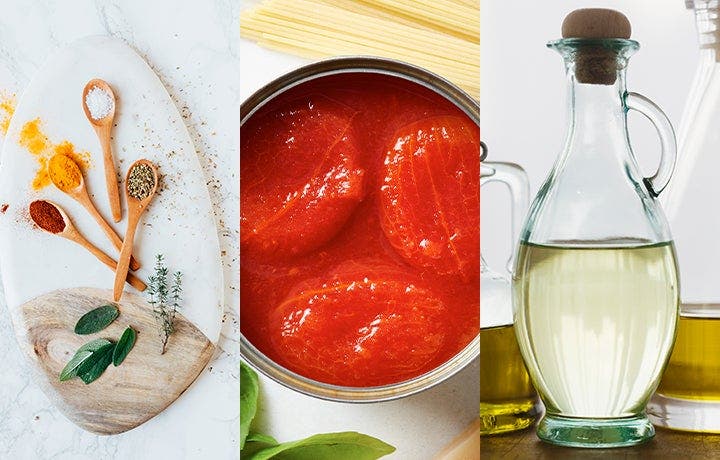
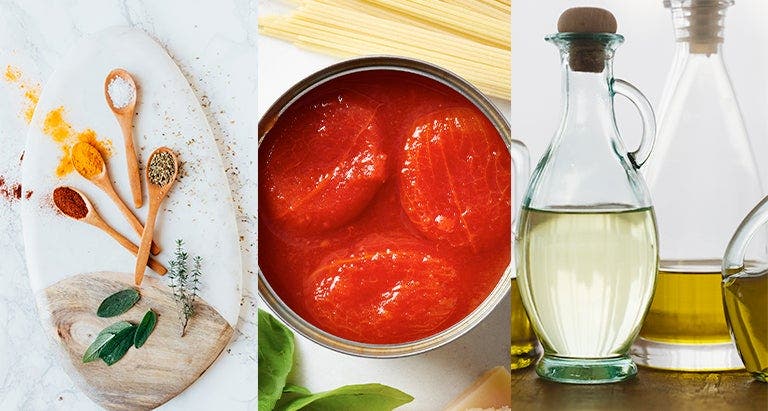
Whether you’ve been cooking for decades or are new to the stove, here are our three best and (yes) simple ways to make your efforts soar beyond the usual.
1. Taste common ingredients.
How many of us have ever tasted a chickpea right out of the can, sipped on purchased broth from the box, or nibbled a frozen green bean before the rest get added to a casserole?
To be a better cook, follow this process:
- Spend ten bucks on several cans of diced tomatoes, broth, or beans.
- Open them.
- Sample them. Either heat a sample in the microwave or try it straight out of the can.
In a side-by-side taste test, you’ll discover which is to your liking: not too salty, not too sweet, not too sour, better texture. Don’t waste what’s left in the cans. Freeze it in small quantities. They may not be your favorites but they’ll be fine in gooey casseroles or long-simmered braises. And in the future, you’ll know which brand best suits you. You’ll also know to stock up when you see sales. For our favorite recipes to use your newly-discovered favorite canned tomatoes, try:
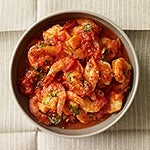
| Shrimp with Spicy Tomato Sauce |

| Eggplant Rollatini with Tomato-Basil Sauce |

| Italian-Inspired Vegetable Barley Soup |
2. Stop buying spices in bulk.
Have you ever been tempted by those big bottles of dried herbs at street fairs and local swap meets, usually next to the wool socks? Or those giant containers of ground spices at big-box stores?
Face it: none of them lasts forever. Many herbs turn tasteless after a year; many spices, after a couple of years. Some are more fragile still. If you’ve got a great aunt like we’ve got a great aunt, you know that paprika can turn into a tasteless coloring agent on deviled eggs in a matter of months.
Here are your guidelines:
- Whole spices and seeds retain their flavor longer than ground. So buy whole nutmegs and grate them on a microplane.
- Freezers murder dried herbs or spices. The condensation kills the flavors.
- Herbs and spices don’t deteriorate overnight. It’s a gradual process you may not notice.
Store dried herbs and spices in tightly-sealed containers in a cool (70°F – 75°F) spot. And never store them near the stove.
To determine if an herb or spice is still perky, shake well with the cap on the bottle, then unseal and smell the aroma. If it seems like pleasantly-scented dust, it is.
Consider buying dried herbs and spices in smaller quantities. They will indeed cost more ounce per ounce, but there may be less food waste and more flavor in your cooking over the long haul.
Here are some of our favorite dishes that use lots of spices:
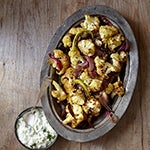
| Roasted Madras Curry Cauliflower with Raita |
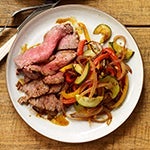
| Spice-Rubbed Flank Steak with Fajita Vegetables |

| Grilled Baby Eggplant with Yogurt Sauce |
3. Use full-flavored oils and fats.
Don’t waste a single bite on a tasteless morsel. Rather than standard cooking sprays, use a coconut oil spray for stir-fries, curries, Central American fare, or almost any-deep flavored beef braise. Use an olive oil cooking spray to pump up the flavors in French, Italian, or Mediterranean fare.
Or go bolder. Try walnut oil at the base of beef stew. Or pecan oil under a chicken braise. Remember, too, that a toasted nut oil or even toasted sesame oil can add lots of flavor if it’s drizzled on a dish at the end, sometimes no more than 1 teaspoon.
Here’s one word of caution: nut and seed oils go rancid quickly. Once opened, store them in the fridge for three or four months. If you open a can or bottle and the oil has a musky, acrid smell, take it back to the store for a full refund.
To use full-flavored oils to their best, try:
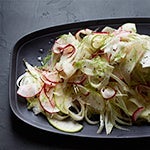
| No-Cook Apple and Fennel Slaw |

| Spicy Pork and Cucumber Noodle Salad |
